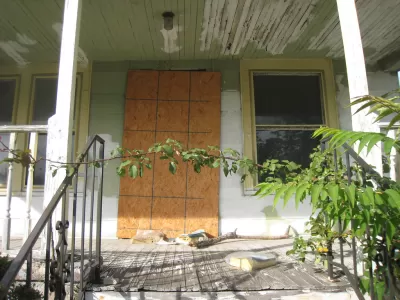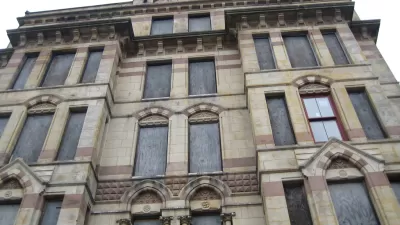Mobile, Alabama, has changed the way it deals with blight, and the results have been substantial.

Hana Schank explores the legal and policy changes in Mobile, Alabama, that have helped the city turn around a blight problem that was consuming neighborhoods, exacerbating segregation, and hindering economic development.
The city's innovation team, a project funded by Bloomberg Philanthropies, and a mayor who made blight a priority have been instrumental in altering how blight is defined, identified, and addressed as well as the legal underpinnings related to ownership of properties.
The innovation team started identifying "blight zones," instead of individual structures, and developed an index that has helped the city’s blight task force more effectively pinpoint properties where action is needed. The city also stopped issuing fines and instead started giving owners the opportunity to make repairs. If they failed to do so, the city would take on the task and then place a lien on the property for the costs.
Schank details the history of the onerous state property laws that made it difficult for the city to get new owners into repaired homes. "Last year, prompted in large part by the Mobile innovation team’s work, the Alabama state house passed HB430, which allows cities to use municipal liens, rather than tax delinquency, to claim ownership of a property."
The number of blighted properties in Mobile has dropped by almost half in four years, says Schank. "This is the story of how one city reduced blight, but it is also the story of what happens when cities think differently about how to solve their problems, when politicians are willing to embrace policies that might not line up with the party line, when city workers look beyond band-aid solutions."
FULL STORY: Blight is eating American cities. Here’s how Mobile, Alabama, stopped it

Study: Maui’s Plan to Convert Vacation Rentals to Long-Term Housing Could Cause Nearly $1 Billion Economic Loss
The plan would reduce visitor accommodation by 25,% resulting in 1,900 jobs lost.

North Texas Transit Leaders Tout Benefits of TOD for Growing Region
At a summit focused on transit-oriented development, policymakers discussed how North Texas’ expanded light rail system can serve as a tool for economic growth.

Why Should We Subsidize Public Transportation?
Many public transit agencies face financial stress due to rising costs, declining fare revenue, and declining subsidies. Transit advocates must provide a strong business case for increasing public transit funding.

Dear Tesla Driver: “It’s not You, It’s Him.”
Amidst a booming bumper sticker industry, one writer offers solace to those asking, “Does this car make me look fascist?”

A Visual Celebration of Manhattan’s Chinatown Elder Community, Through Food
Lanterns, cafeteria trays, and community connection take center stage in this stunning photo essay.

How to Make US Trains Faster
Changes to boarding platforms and a switch to electric trains could improve U.S. passenger rail service without the added cost of high-speed rail.
Urban Design for Planners 1: Software Tools
This six-course series explores essential urban design concepts using open source software and equips planners with the tools they need to participate fully in the urban design process.
Planning for Universal Design
Learn the tools for implementing Universal Design in planning regulations.
City of Santa Clarita
Ascent Environmental
Institute for Housing and Urban Development Studies (IHS)
City of Grandview
Harvard GSD Executive Education
Toledo-Lucas County Plan Commissions
Salt Lake City
NYU Wagner Graduate School of Public Service




























